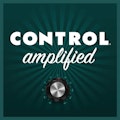The evolution of non-contacting radar in chemicals, oil & gas and utilities
While there are different level measurement technologies in place, non-contacting radar has shown to be effective for a multitude of applications, and the technology has evolved considerably over the last 50 years. Ilya Rikhter, general manager of Rosemount Process Level at Emerson, the inventors of radar level measurement technology, recently talked with Control’s editor in chief, Len Vermillion, about the benefits and evolution of non-contacting radars.
Transcript
Len Vermillion: Why non-contacting radar versus other technologies for level measurement?
Ilya Rikhter: There are many different level measurement technologies available, and the reason for this is the variety of applications. There are less complex applications, such as IBC (intermediate bulk container) tanks, open channel of flow and some simple storage tanks. There are more complex vessels such as boilers, distillation columns and reactors. There's no universal type of technology that can cover all applications at once. There are different varieties of technologies in place and non-contacting radar technology is one of them.
The technology has strong benefits because, as its name suggests, it's non-contacting. It does not come into direct contact with the product being measured. As this is an electronics-based technology, it allows for good scalability, as well as for additional functionality such as diagnostics, a variety of output protocols, and many other things that help customers worldwide be more efficient with their level measurement applications.
Len Vermillion: Can you can expand on the benefits and some of the industries that would benefit?
Ilya Rikhter: There are many considerations that could be put into use when choosing one technology versus another. Non-contacting radar has a specific purpose of measuring the top product level surface and the technology is beneficial in cases where there's lots of turbulence on the surface. These are applications where we don't want the radar device in direct contact with the process media, perhaps because the process is highly corrosive, caustic or the media is viscous and sticky.
Another consideration for non-contacting radar is specific tank geometry, such as extremely tall tanks or tanks with some internal obstruction in place. Generally, non-contacting radar is a very versatile technology and easy to deploy because it's generally fit and forge, so commissioning goes smoothly in most cases.
Len Vermillion: Non-contacting radar technology has adapted to meet industry needs. How has Emerson adapted to meet various industry needs?
Ilya Rikhter: I think the technology maturity curve shows that many devices have good accuracy and are capable devices when it comes to handling long measuring ranges. Also, the majority of these devices can handle extreme process pressures and temperatures, and they have good grounds to be compliant with functional safety standards.
Specifically, where the technology has evolved is around general reliability of measurement, also coupled with the high sensitivity of measurement. In the old days, you could get just one or another. You could track the product surface fast enough, but the measurement wouldn't be super reliable. Or vice versa, measurement would be super reliable, but the technology would only be a good fit for slow-moving processes.
Two other domains where contemporary non-contacting radar devices have made major advancements are connectivity and ease-of-use. If we take the measurement reliability and sensitivity part first, the technology has evolved to the point where you can achieve both at once. You can have reliable measurement, and you can couple it with extremely fast-moving processes. This is what we call Emerson’s Fast Sweep Technology. And, in the case of Emerson, 50 years of product innovation and evolution have led to our latest release of two new radar level transmitters utilizing Fast Sweep Technology—our sixth-generation non-contacting radar transmitters. So, we have 50 years on our backs to have some judgment about the quality of measurement, and how to package it in a form factor that's beneficial to our customers' applications.
Then, the second domain is connectivity options. Different industries require different protocols. We know that 4-20 mA HART is still the de facto standard, but there are many other emerging protocols, such as IO-Link Bluetooth® and Ethernet-APL, that we're actively considering when working on our new programs. And, of course diagnostics, the amount of data about the device and the process itself, you can get from this very specific radar installation.
Len Vermillion: What are some of the values of the products for various industries?
Ilya Rikhter: We've released a couple of new products, but let’s start by grounding ourselves around the Rosemount 5408 Level Transmitter because it's the non-contacting radar that's been around for the past six years. It's had great success, specifically in the oil and gas, refining and petrochemical industries. This is the device that generally covers the widest range of applications. It's robust, it has a lot of diagnostic capability, and it's a very good fit for pretty complex applications.
The need our customers have been communicating to us is that it would be really good to be able to package similar processing power, measurement robustness and diagnostics capabilities into something that would fit other types of applications. This is basically the reason for us to have worked on two new, non-contacting radars.
The first is the Rosemount 3408 Level Transmitter. This is the device that's optimized for the chemical industry, incorporating smart features that reduce complexity throughout the product’s lifecycle for true ease-of-use. For ease of commissioning with an intuitive graphical user interface and Bluetooth® enabled functionality, we incorporated Emerson’s proprietary Smart Meter Verification software. This provides an easy means of verifying device health with no process interruption, and a modular design with easily interchangeable electronics for streamlined maintenance and upgrade.
The second new product, the Rosemount 1208 Level Transmitter, completes the non-contacting radar level portfolio. This transmitter has been specifically designed for simple applications where customers anticipate needing 100% plug-and-play.
Both of these new devices utilize unique 80GHz FMCW Fast Sweep Technology—a culmination of Emerson’s 50 years of radar level technology innovation, resulting in our most robust and reliable process level measurement available today.
So, the Rosemount 5408, 3408 and 1208 non-contacting radars have been developed, while having in mind our customers’ needs and challenges in the different industries. From the most demanding applications in the oil and gas or chemical industries to the simplest ones in process industry utilities or water and wastewater, there's a Rosemount non-contacting radar level transmitter suited to solve your needs.
About the Author

Control Amplified
The process automation podcast
The Control Amplified Podcast offers in-depth interviews and discussions with industry experts about important topics in the process control and automation field, and goes beyond Control's print and online coverage to explore underlying issues affecting users, system integrators, suppliers and others in these industries.

Leaders relevant to this article:
